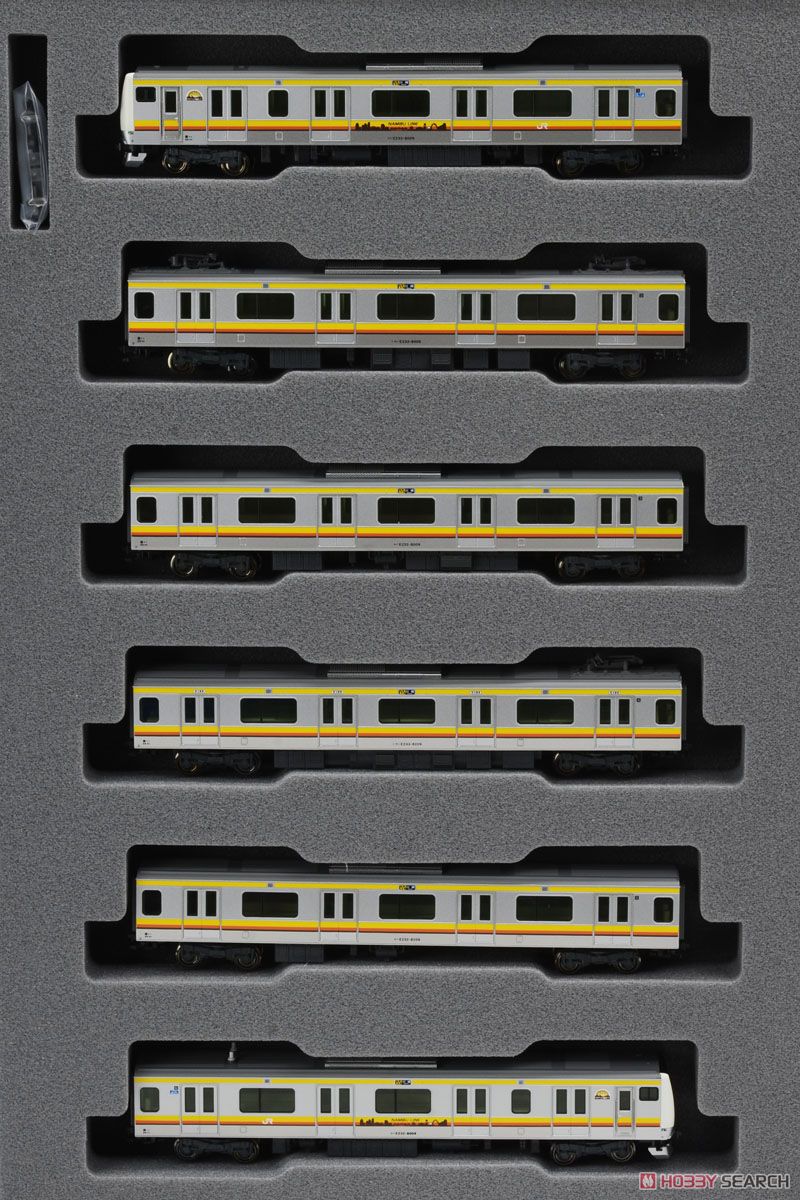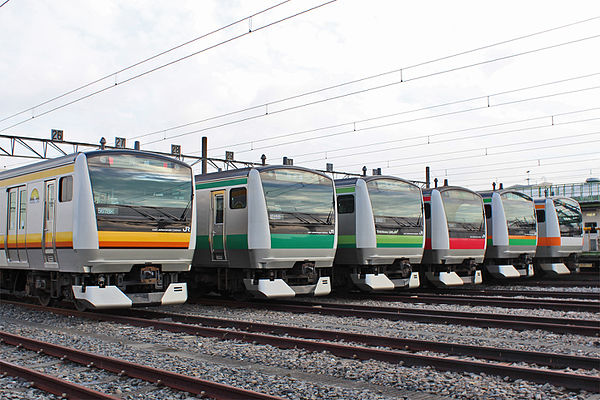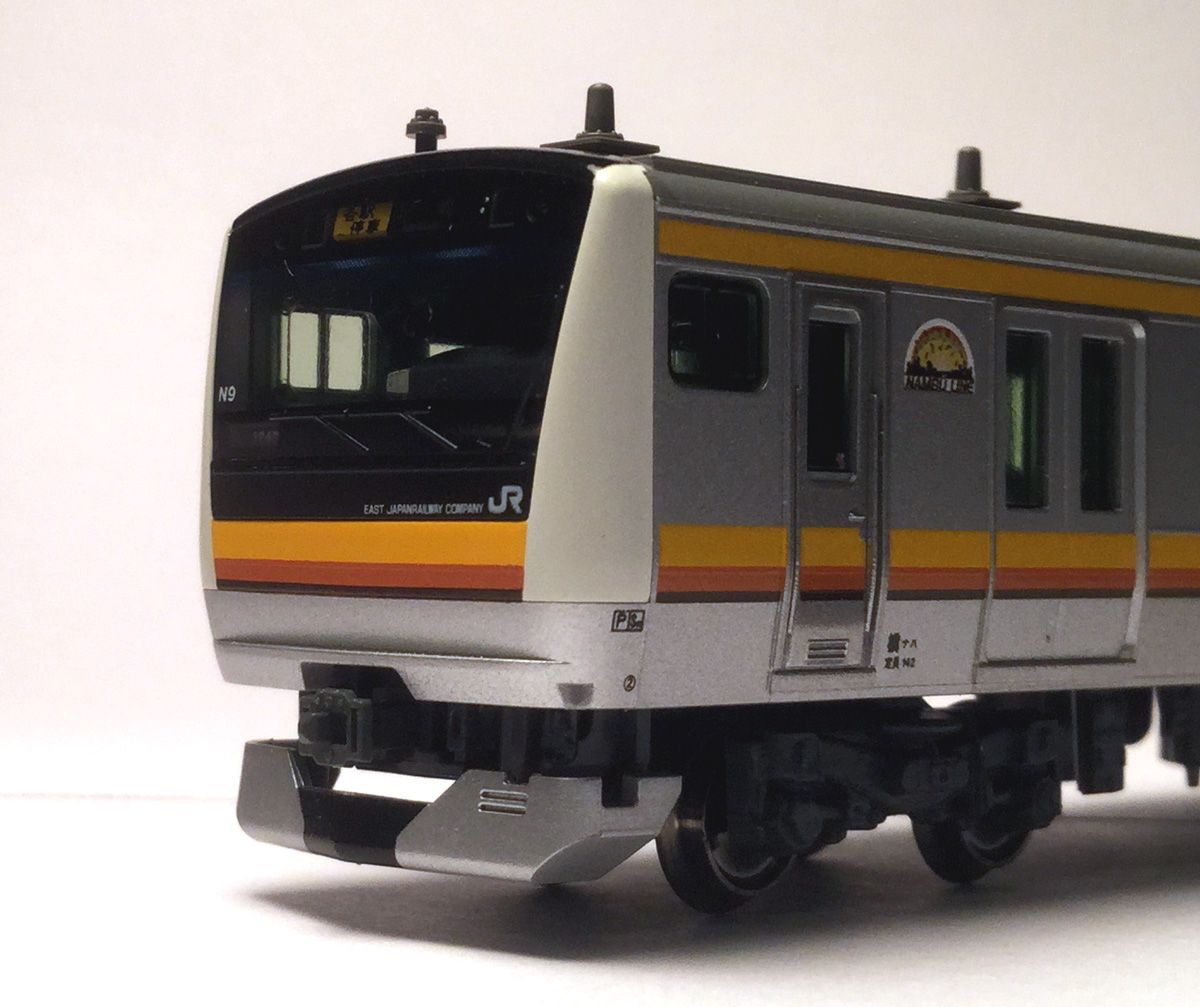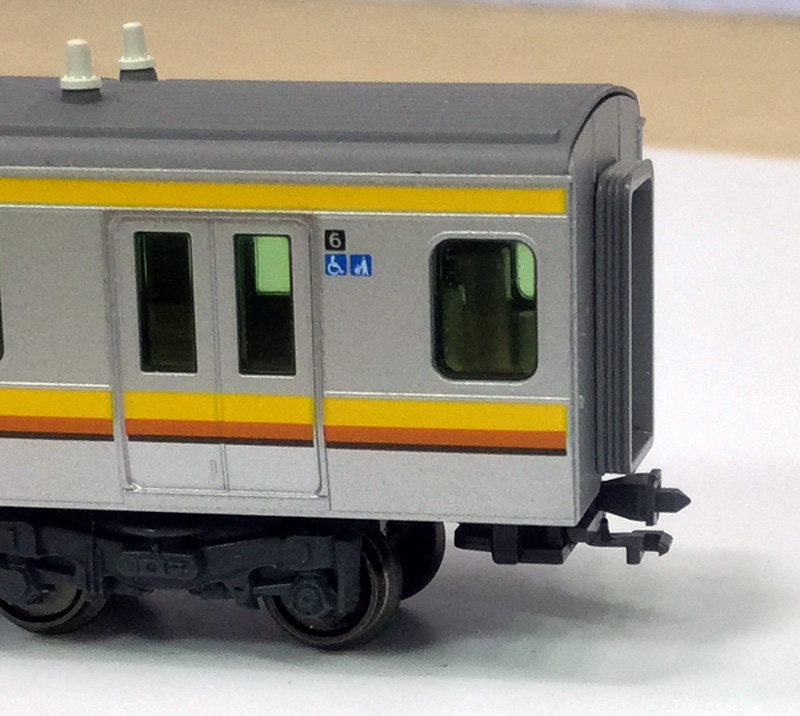Kato E233 Series Passenger Trains: Nice Models
Published: 2018-11-15 - By: nscalestation
Last updated on: 2021-08-12
Last updated on: 2021-08-12
visibility: Public

Kato E233 Series Passenger Trains: Nice Models
The E233 series began appearing on some of Tokyo's busiest rail lines around 2006 replacing a number of older models. The "E" in the model number stands for East as these models are exclusively operated by Japan Rail East. Each of these rail lines has it's dedicated trains painted in a unique paint scheme for that line.

This colorful photo lineup from Wikipedia shows trains decorated in different paint schemes for the lines that they run on. While each line may operate a slightly different combination and number of cars, all the E233 series run on 1067mm gauge track and on 1.5KV DC voltage from overhead wire. For those who wish to know more about the prototype Wikipedia has an excellent detailed article on these trains. Here
The Models
Kato has been producing models of this prototype since 2008 and there have been many releases covering most of the lines that the E233 series operate on. Depending on the length of a particular train there can be anywhere from 1 to 4 sets to make up a full train as it is run on the prototype. Most of these set are listed in the Trovestar N Scale database and be listed by entering E233 Kato into the search box.

The photos shown here are of the Nambu line model but the features and detail quality is common to all the releases of this model. The motorized unit is in one of the middle cars and has rubber traction tires on one wheel on each side. This is a common practice on Kato models. Each cab / end unit has bi-directional LED lights. These models are designed to accept the Kato interior lighting kits and DCC decoders.
The the wheels are darkened metal with low profile flanges. I have run my train on most commonly used N Scale track including code 55 track and have always found it to run well. The couplers between the cars in these model sets are one of several different types that Kato uses on their Japanese train models. You simply push them together or pull them apart and I have never had an accidental uncoupling on any trains using this type of coupler. However, they can be delicate and if one gets broken it may not be easy to get a replacement if you are outside Japan. The replacements are not expensive and when I had to replace one I bought extras. The cab end of each end car has a dummy coupler.

Instructions
Instruction for these sets are in Japanese but there are pictures and diagrams so it is possible for those who do not read Japanese to figure things out. As an example the photo below is from the back of the box of set 10-801. It shows how the cars from the 3 different sets for the Chuo line would go together to form the complete 10 car Chuo line train. What I normally do is to place a numbered arrow sticker on the bottoms of my cars so I can quickly set them up in the correct position and direction.

Summary and Availability
These are well done models of a family of modern Japanese Urban passenger trains. While not widely distributed at retailers outside of Japan, they are available from Japanese dealers on the internet.

